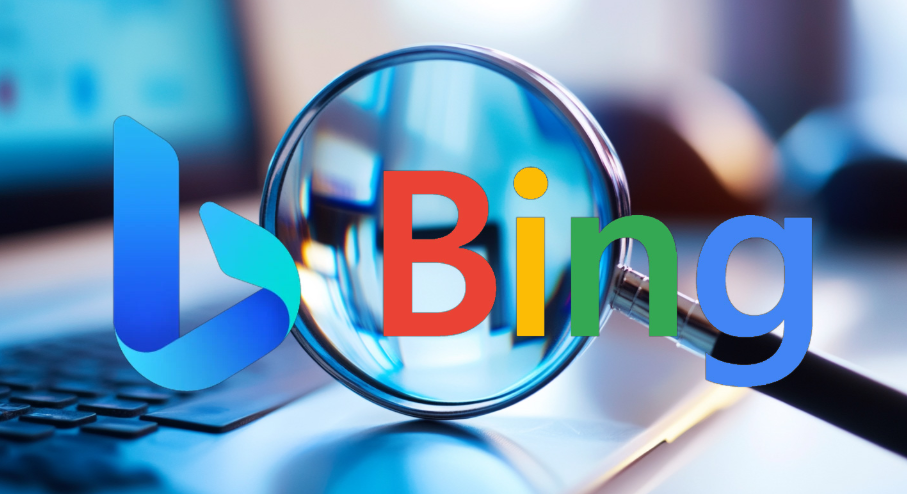
Overview of Bing’s Recent Search Box Design Controversy
Recently, Microsoft’s Bing has sparked significant discussions across tech circles for its subtle yet notable strategy aimed at imitating Google’s search engine user interface (UI). This sneaky tactic gained widespread attention when users noticed changes in Bing’s design, seemingly crafted to mislead users searching for Google or similar search engines. Bing strategically anchors its interface to a point where Microsoft’s branding is concealed, leaving behind an experience that bears a striking resemblance to Google’s interface.
This phenomenon caught fire among netizens, tech publications, and critics alike, with claims that Microsoft is purposefully leading Bing users to believe they’re using Google. Renowned platforms, including The Verge and 9to5Google, have weighed in, shedding light on this controversial development.
How Does Bing Mimic Google’s UI?
Anchoring the User View
The most noteworthy tactic employed by Microsoft Bing involves modifying the page layout when users search terms like “Google,” “search engine,” or even “Yandex.” After submitting these queries, Bing automatically anchors the webpage. This creates an effect where the Microsoft and Bing branding at the top of the page is tucked away, making room for a clean and Google-like search box.
By replicating Google’s clean design approach, Microsoft’s subtle layout adjustment caters to inattentive users who might mistake Bing for Google.
What Users See When Searching Google on Bing
When performing searches related to Google or other popular search engines, Bing’s replicated UI consists of:
- Minimal branding elements: Hidden Microsoft and Bing logos.
- Google-like search box: A central, large input field reminiscent of Google’s clean interface.
- Deceptively familiar layout: Similar alignment and spacing, inducing a subconscious association with Google’s design.
User Behavior and the Implications of Misleading Design
Many users of Bing who search for Google might not immediately notice the subtle design shift. People often use Bing as a default browser (e.g., on Microsoft Edge or Windows devices) to access Google by typing “Google” into the search bar. With Bing’s strategic anchoring, some users could inadvertently complete their queries within Bing itself, believing they’ve already navigated to Google.
This behavior highlights how minor adjustments in user interfaces can influence browsing habits and even consumer trust. By blurring the lines between Bing’s and Google’s appearances, Microsoft is potentially capturing unintended search traffic and increasing user engagement on their platform.
Tech Community Reactions and Media Coverage
This tactic has drawn attention from numerous high-profile publications and industry experts. Several outlets have commented on the ethical implications and motivations behind Bing’s deceptive UI practices:
- 9to5Google labeled this move as “sneaky,” questioning Microsoft’s intentions to mislead users.
- The Verge emphasized how Microsoft’s design exploits less observant users searching for Google.
- Bleeping Computer called it outright misleading, referring to the hidden branding.
- XDA Developers expressed concern over the potential consequences for search engine transparency.
This media scrutiny underscores a broader discussion about competitive behavior in the tech world, particularly between Microsoft and Google, two titans in the digital space.
Why Is Microsoft Targeting Google Search Users?
Google has long dominated the search engine market, commanding over 90% of global traffic. Bing, despite its improvements and integration with AI (via OpenAI’s GPT integration), holds only a small fraction of the market share. By leveraging the presence of built-in tools like Microsoft Edge and the default status of Bing on Windows devices, Microsoft is aggressively competing to attract users to its ecosystem.
The Potential Benefits for Microsoft
- Increased search volume on Bing: Every user tricked into using Bing instead of Google boosts Microsoft’s analytics and advertising reach.
- Expanded influence over ad revenue: More users on Bing mean more opportunities for paid ads to be viewed and clicked.
- Brand recognition through imitation: Microsoft benefits when users unknowingly associate Bing’s performance with the reliability of Google’s search capabilities.
The Ethical Debate: Are These Tactics Justifiable?
Critics have raised ethical concerns regarding Microsoft’s imitation strategies. Some argue that these designs border on deception, taking advantage of inattentive or novice users.
However, proponents may defend this as a competitive tactic in the highly aggressive search engine market. They point out that companies often rely on subtle marketing techniques to acquire users from competitors.
What Does This Mean for Users?
From a user perspective, these practices can sow confusion and potentially erode trust. Clear branding and transparency are vital for maintaining user confidence, and a lack thereof could deter informed users from relying on Microsoft’s services in the long term.
Microsoft and Google’s Ongoing Rivalry
This latest incident is just one chapter in a long history of competition between Microsoft and Google. While Google maintains its status as the leader in online search, Microsoft has been strategically repositioning itself with aggressive moves to boost Bing’s visibility, from incorporating AI-driven tools to partnerships with platforms like LinkedIn.
However, this mimicry has prompted Google to respond indirectly, reinforcing its stance as a more trustworthy and transparent platform. In turn, the rivalry between these tech giants continues to shape the industry landscape.
How This Impacts the Broader Search Engine Landscape
User Education Becomes Crucial
With deceptive practices gaining attention, educating users about search engine branding and functionality becomes increasingly important. Savvy users need to recognize subtle visual and behavioral cues to differentiate between platforms accurately.
Heightened Regulatory Scrutiny
Moves like these could trigger more rigorous investigations by regulators concerned with monopolistic practices and fair competition. Tech companies are expected to follow guidelines that ensure users are not intentionally misled or manipulated.
Final Thoughts: The Road Ahead
The controversy surrounding Microsoft Bing’s imitation of Google’s search interface sheds light on both the innovative and questionable practices companies employ to stay relevant in competitive markets. While Microsoft’s tactics may provide short-term gains, they risk alienating users and igniting broader conversations about ethical tech practices.
Ultimately, the user experience and trustworthiness of search engines like Google and Bing will play a pivotal role in their success moving forward.
For users, remaining vigilant and critical of such tactics is essential. Understanding branding, navigation, and subtle design choices empowers informed browsing habits and helps discern between ethical and unethical practices.
 Tox You It's all about earning solutions, News, Entertainment
Tox You It's all about earning solutions, News, Entertainment
